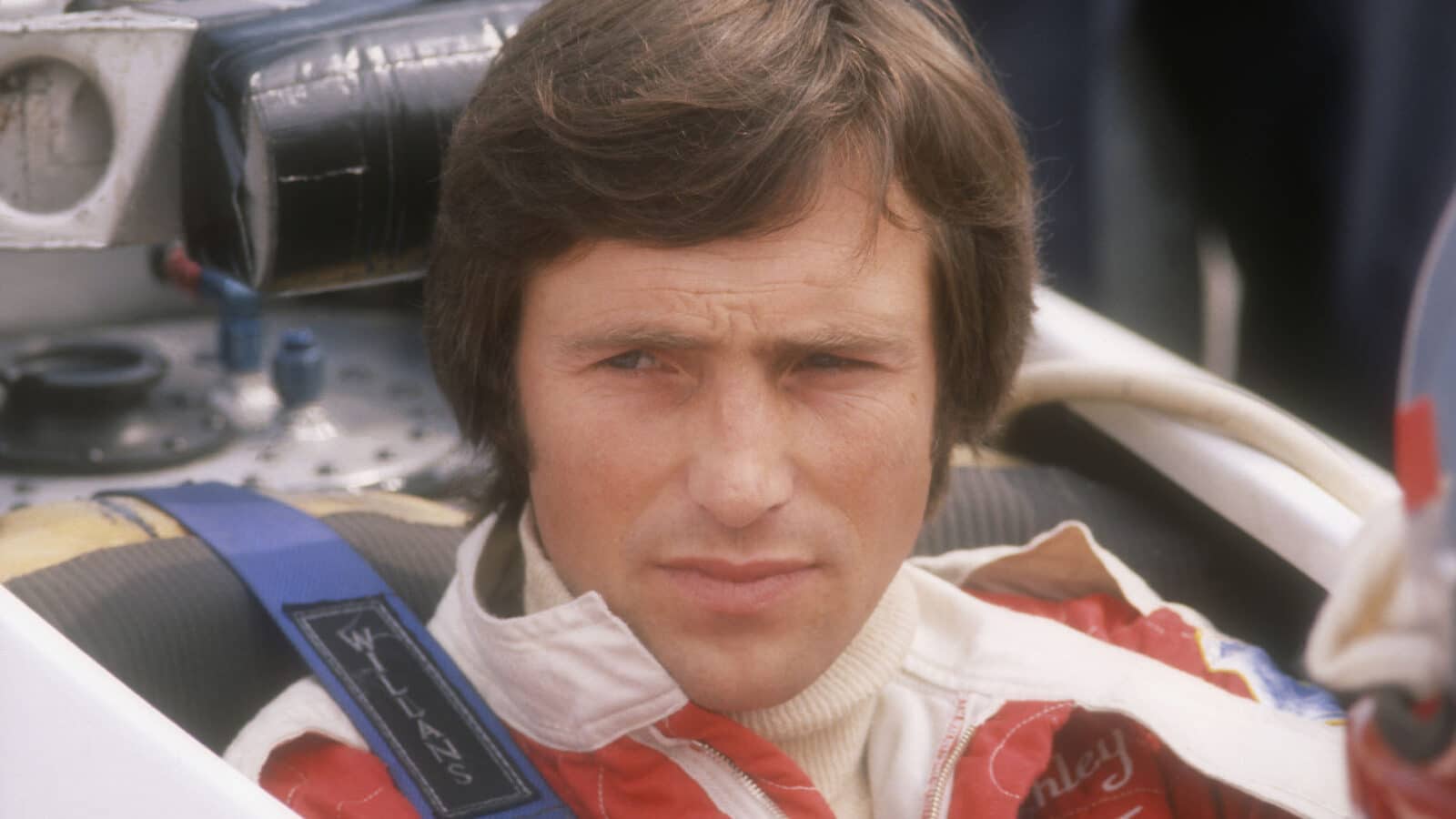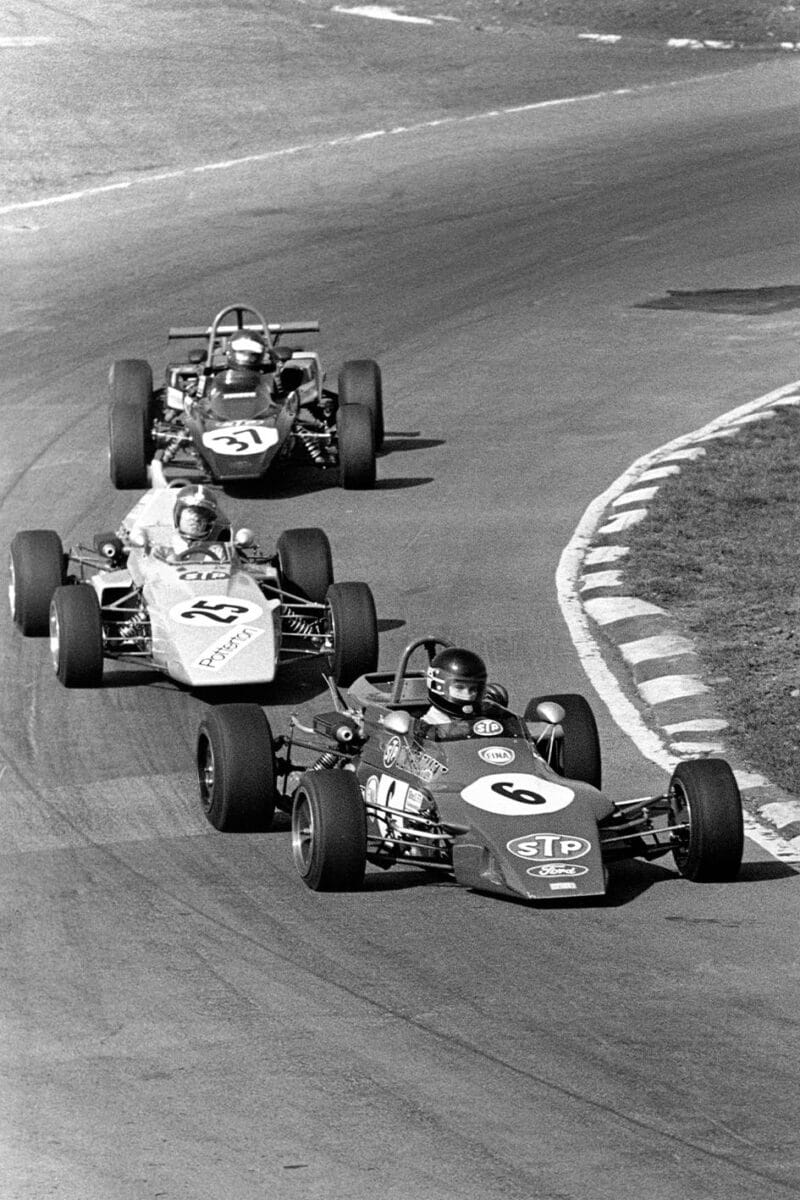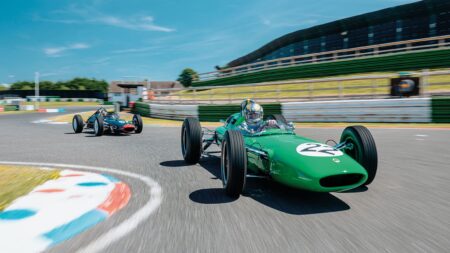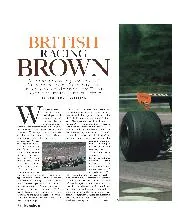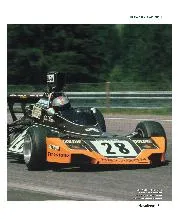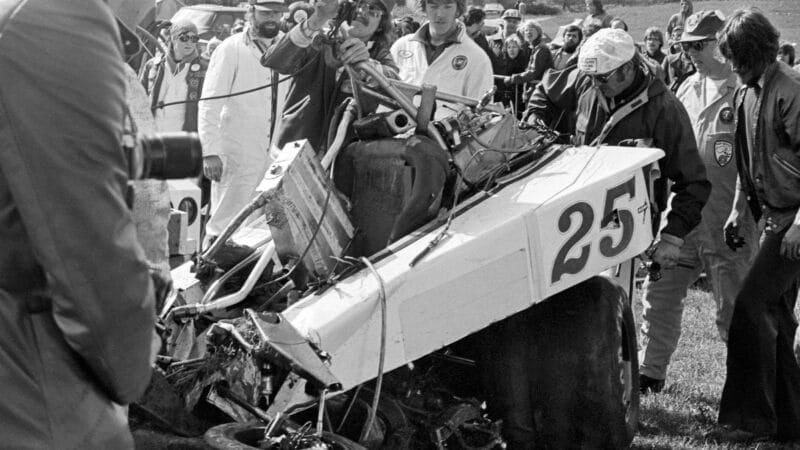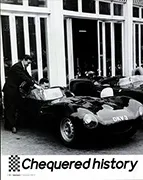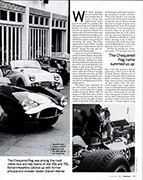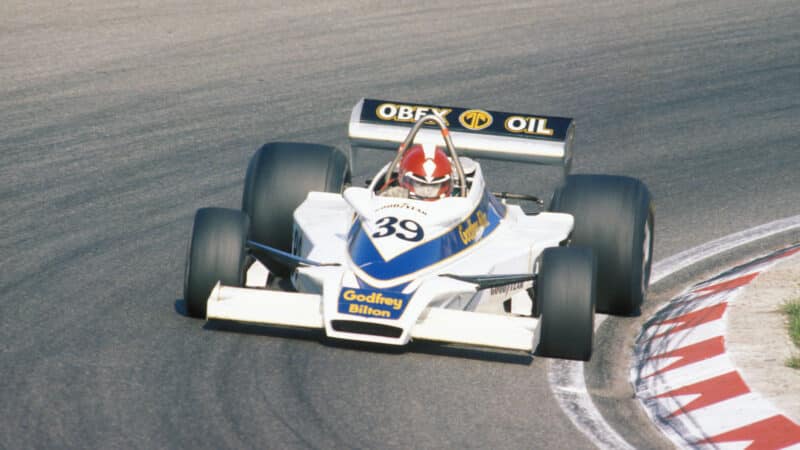“At the Nürburgring, the right-front tyre went flat at the bottom of the Foxhole on the third lap of practice. In second practice a mechanic effectively sabotaged my efforts as he’d mistakenly installed the wrong top gear, so instead of having 11,000rpm, I had only 9000. We qualified, but for the warm-up lap [car designer] Ray Jessop told me to be careful and lift off at the Foxhole, what with all the extra race fuel on-board. I did just that but the right-front tyre blew again at precisely the same spot. I continued on for another 10 miles, arriving at the pits without the tyre and the right-front wing. Ray was concerned that vibrations might have cracked the top front wishbone so he changed it in record time, eyeballing the camber and toe-in settings. There was no replacement wing so they simply taped up the wing pole to keep it in place, increased the left-front wing and reduced the rear wing. Ray then wished me luck.
“I remember Jackie Stewart sauntering along the grid. When he finally arrived at my car he looked at the somewhat excessive right-hand camber/toe-in and the bandaged right wing pole then shook his head and smiled!”
Our hero finished 14th following another identical front-right puncture, the issue in time being traced to a batch of porous wheels.
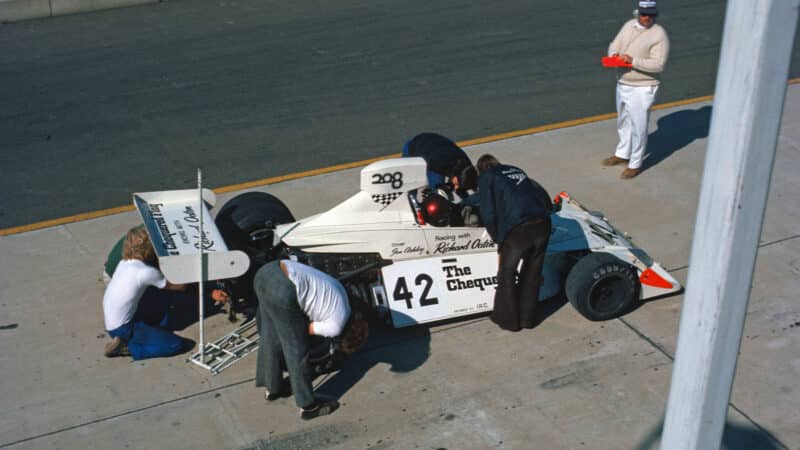
’74 saw poor efforts with Token and then Chequered Flag – pictured here at Watkins Glen
Grand Prix Photo
“For the next race, the Austrian GP at the Österreichring, there was only the one flat tyre, this time the left front. I was doing 180mph-plus at the end of the pit straight heading into the flat-out right-hander at the time. In the race, a left-front tyre began bubbling: the glassfibre front wings were flexing at high speed and this reduced front-left grip and overheated the inside tread. Ray then called me in for another lightning two-minute pitstop. Then my left-rear wheel came loose. In I came again and while they replaced it the engine began to overheat. They thought the car was on fire so hauled me out, only to realise it was just steam. I clambered back in and off I went to finish eight laps down [on winner Carlos Reutemann].
“By now Graham and Richard were pretty pissed off and did a deal to buy an ex-John Watson/ex-Hexagon Brabham BT42. John Surtees then phoned and invited me to Goodwood for a test. Finally starting at 4pm, I did one lap before returning on seven cylinders. They checked a couple of things and I went out again only to come back in immediately. Without proper power the car just understeered. Afterwards they asked me what I thought. I’d just had a bellyful of this with Token but I was diplomatic!
